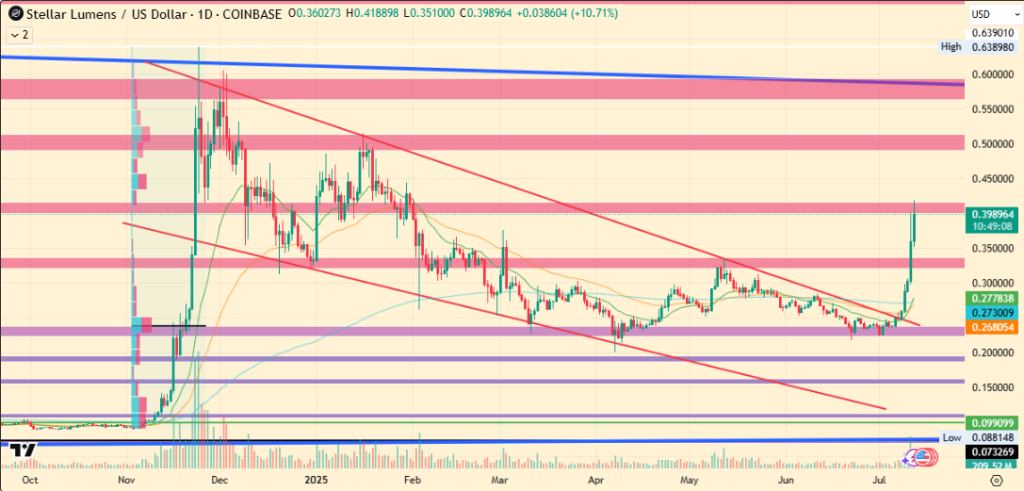
The post Why SUI, Solana’s Biggest Rival, Could Skyrocket to $10 – Here’s Why! appeared first on Coinpedia Fintech News
SUI, a blockchain project that many now call Solana’s biggest rival, is suddenly back in the action. Over the past week, its price has jumped nearly 25%, going from $1.86 to around $2.32. But this quick surge is just part of a much bigger picture. Several signs are pointing to something much bigger on the horizon for this rising Sui token.
Sui Stablecoin Inflows Hit Record High
SUI was once seen as one of the worst-performing assets this year, with its price falling nearly 60% since January. But things started to change in March and April, as the token began showing signs of a strong comeback.
In the last week alone, the SUI network saw a major jump in stablecoin activity. Around $60 million worth of stablecoins flowed into the network in just 24 hours, marking a new record.
This surge has now placed SUI among the top blockchain networks when it comes to stablecoin inflows, even outpacing giants like Ethereum and Solana.
SUI Showing Strong Bullish Signals
Adding even more excitement, popular crypto analyst Raoul Pal has shared a very bullish outlook for the token. Looking at the SUI’s 1-day price chart, Pal believes the coin is close to breaking out of a downward trend and may be ready for a strong rally.
Supporting this view, another well-known crypto trader, Capital Faibik, points to a “falling wedge” pattern forming on SUI’s chart. This pattern often signals a breakout, and if that happens, he believes the price could surge to around $4.80.
Big Prediction: SUI to $10?
But the most eye-catching prediction comes from investment giant VanEck. The firm, which manages over $116 billion in assets, says SUI could rise by more than 350% and hit $10 by the end of 2025.
This prediction seems more likely now, as Canary Capital Funds has just filed for the first-ever SUI token ETF. This move could attract institutional investors, which usually helps the asset grow in the long term.
SUI Price Analysis
As of now, SUI is currently trading at $2.32, showing a 1.5% increase in the last 24 hours, with the market cap reaching $7.5 billion.
Looking at the charts, it’s clear that the bulls are in control. The RSI has jumped from 48 to 68, indicating renewed buying activity. Plus, the MACD has turned bullish, showing that the trend could continue its upward trajectory.

The token recently broke past a critical resistance at $2.25, a level that now offers solid support. If SUI keeps pushing forward, the next resistance point to watch is $2.78. A breakout above this could lead to a rise toward $3.17.









 ChartNerd
ChartNerd  (@ChartNerdTA)
(@ChartNerdTA)